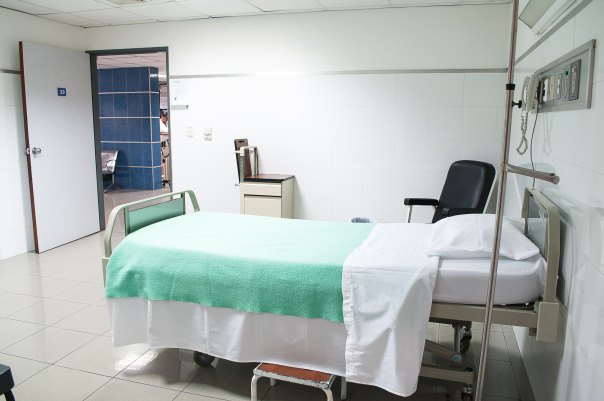Blog Archives
How To Overcome Operational Bottlenecks In Your Hospital

My company, Cobblestones Consulting, provides non-clinical services and solutions to healthcare organizations in India. As management consultants, we partner with our clients, on fixed-term engagements, to ensure their people, I.T tools and processes help them achieve patient-centric operations and profit maximization.
One of our clients is a large +500 bedded multi-specialty hospital in Western India which operates in collaboration with the government in Public Private Partnership (PPP) mode. In addition to being a tertiary care teaching organisation that has all the important specialties, the hospital also conducts rural community health & training programs. It also serves as a research center for clinical trials, social sciences and operational research.
Public perception of this hospital was largely positive. It was seen as an effective provider of rational, affordable and comprehensive healthcare. However, in recent times, the hospital was in the news for all the wrong reasons.

The Challenge
The hospital was accused of not honoring its mandate to provide 33% of its beds free of charge to the poor and indigent, of having poorly maintained and at times, dangerous infrastructure, staff that was ill-trained and rude, poor financial planning and excessive bureaucratization.
This negative publicity was influencing patient perceptions across the continuum of care, to the detriment of the hospital. Patient inflow reduced and the hospital began bleeding profits at an alarming rate.
The role of the Operations Team in this hospital was to streamline administrative as well as non-clinical operational process flows, in an effort to “render quality service at low-cost”. They were responsible for everything from surgical schedules, patient flow through the emergency department, coordination with community emergency services, coordination with the various wings, wards and departments within the hospital, assessing the capacity of beds, staff, and equipment to satisfy random patient demand, and all necessary logistics.
The Operations Team in this hospital first sought to find out the severity of the issue. Then, they tried to frame methods to approach the problems and to figure out the obstacles. This was obviously not working out for them. With each passing day, negative patient experience in the hospital was causing fewer and fewer admissions & greater patient exodus to the competition. As is to be expected, the Board of Directors at the hospital gave more importance & focus to the solving of clinical issues by the medical departments, which only made the task of the Operations Team more difficult.
In this light, the hospital sought external expertise to find a stable and feasible solution for the current non-clinical problem viz., inability in achieving operational efficiency. This was seen to either contribute to or mitigate the healthy growth of the hospital.
Cobblestones Consulting was invited to join the management team of the hospital for a specified period, with this mandate.

THE COBBLESTONES WAY
The first thing we did upon joining was not take the diagnosis of the problem as given. Rather than work in the management mandated areas of quality, flexibility, delivery and cost control in the hospital, Cobblestones Consulting preferred the data-led approach to problem solving.
We conducted a market research exercise within the hospital, with both clinical and non-clinical staff, that threw up interesting statistics. 60% of the 352 representative respondents in our random sample ranked patient experience as a top priority for the hospital. Survey respondents also listed purposeful leadership and strong culture as the top factors in achieving positive patient experience.
Gap Analysis
To help the hospital administrators run the system judiciously, it was essential for us to find out the probable areas in the hospital’s operations where more attention was required so that the organization could become more dynamic.
The main roadblock between the present situation and the projected future for the hospital was the breakdown of operational processes in the hospital.
The reason?
- Staff was not comfortable operating computers.
- Computer stations were not synced fully with each other.
Something this elementary was causing bottlenecks to occur & backlogs to form in crucial areas. Surgical schedules were affected, upsetting patient flow from the emergency department, and causing ambulance diversions because of overcrowding.
Overhauling the long accepted operational practices in the hospital was not going to be easy, but it was the only way this hospital could succeed in the new and challenging reimbursement climate in the India of 2018.
Process Improvement
When operational processes broke down in the hospital causing bottlenecks to occur in critical areas, these problems exhausted staffing and other resources, prevented improvements, and most importantly, compromised the patient experience. A simple assessment of the present vs/- projected condition led Cobblestones Consulting to address the first most obvious symptom of this problem – “too many avoidable patient days”.
This was because, the hospital was often deemed to be operating at “full capacity” for various reasons: Many patients were in isolation due to which second beds in semi-private rooms were unavailable; sometimes all the beds in the hospital were actually full; sometimes a patient waiting for discharge occupied a bed when there was no medical necessity — simply because it’s easier to stay in the bed than to go home that day!
What needed fixing urgently in the hospital was this mismanaged patient-bed-diseases process in the hospital. The hospital was not benefiting from having separate wings and wards with specialized equipment, where different types of patients were treated by nurses and doctors with special expertise.
Implementation
Cobblestones Consulting helped the hospital build positive patient experience into every operational process in the hospital. We did this by implementing a new strategy based on NABH standards, to positively affect the perception of patients in the hospital regarding the quality of care they received. Our operations management improvements began at the top and became a part of the strategic plans and goals shared by the entire organization. From the front desk staff who greeted patients, to the nurses and physicians, to the housekeeping staff who maintained the cleanliness of the rooms – everyone bought into processes that drove a positive patient experience.
We achieved this using a three pronged strategy built on bridging identified gaps in operational efficiency. Through knowledge sharing, training & setting quality indicators backed by a strict monitoring of the results, the desired perception of patient care became a reality in this hospital. Every patient interaction only added to the positive perception about the hospital.
Benefits To The Client
- 40.5% increase in patient flow in the current financial year
- Hospital rapidly gaining competitive advantage
- 10% net gain in return on investment in the hospital
- Reduced time consumption
- 38% increase in revenues in the current financial year
- Streamlined hospital processes
- Enhanced operational efficiency
- Refined quality of care in the hospital
- Organized and smooth hospital workflow
- Elevated scores of patient’s satisfaction for the current year (moved from a score of 3 to 8 in Customer Satisfaction and from 6 to 8 in Quality of Service)
Key Generic Takeaways
Issue 1 – Operational gaps weaken the hospital system which completely curtails productivity. This diminishes the effectiveness & efficiency of the healthcare service and adversely affects service quality & patient satisfaction.
Strategy To Remedy This Issue – Reduce the gap by communicating & circulating the SOP (Standard Operating Procedure). Provide staff regular training and set up a monitoring process to help them follow the SOP.
Issue 2 – To maintain the overall efficiency, patient care quality & cost effectiveness, it is necessary to conduct on-going process training focussed on implementing full capacity protocol in the hospital.
Strategy To Remedy This Issue – Find out the gaps in the process flow of every operation in the hospital. Perform a data-driven analysis to study the gaps and draw out a workable organizational strategic plan. Frame policies & SOP’s based on the requirements of the hospital. Implement them in the day-to-day process of the hospital system. Evaluate & compare the performance.

- Is your hospital system running judiciously? Can you list the indices to measure the same?
- Are you aware of the probable areas where more attention is required so that your hospital becomes more dynamic?
- Can you list the exact obstacles causing the gap in your hospital system?
If your answer is a “NO” to even one of the three questions above, you could use our services. Our aim in the hospital assignment you just read about was to enhance the operational capabilities of quality, flexibility, delivery and cost control. We achieved this.
You could use our expertise to figure out the best strategic plan that suits your hospital. We frame “Standard Operating Procedures” based on National Standards. Further, we assist you in implementing the newly framed strategies through knowledge sharing, training & setting quality indicators. We evaluate the performance of the new strategy & compare it with the standards.
Revamping the standard procedures in your hospital is sure to enhance its operational efficiency which will yield results of high productivity.
CONTACT US
- cobblestonesconsulting@gmail.com
- https://prosperji.wordpress.com/
- https://www.facebook.com/Cobblestones-Consulting
- https://www.linkedin.com/in/priya-ramachandran
Picture Credits:
- Hospital Room Photo by Martha Dominguez
- Stethoscope Photo by Hush Naidoo
-
Castle Ghosts Photo by Joakim Honkasalo